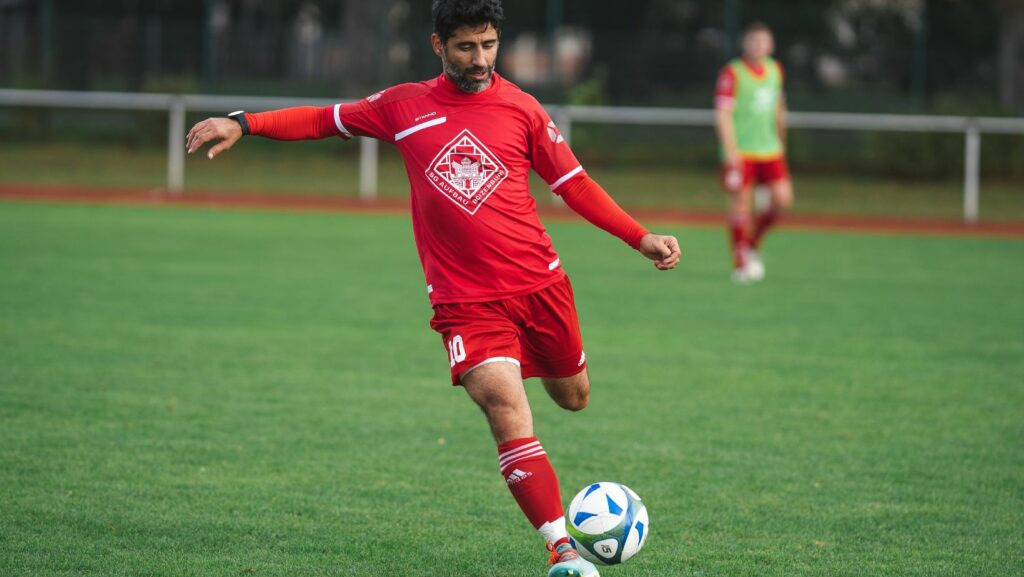How to Pass a Soccer Ball
- Master the Basics: A proper stance, foot placement, and contact technique are essential for executing effective passes in soccer.
- Types of Passes: Understanding short passes, long passes, through balls, crosses, back passes, and one-touch passing enhances gameplay and strategic execution.
- Importance of Communication: Clear communication between players is crucial for successful passing and team coordination on the field.
- Drills for Improvement: Regular practice through individual and team drills—like wall passes and short passing games—sharpen passing skills and accuracy.
- Recognize Common Mistakes: Avoid inaccurate passing and poor communication to improve overall performance and team dynamics during matches.
Passing a soccer ball is a fundamental skill every player must master to succeed on the field. Whether it’s a casual game with friends or a competitive match, effective passing can make all the difference. Understanding the techniques behind a successful pass not only enhances individual performance but also elevates the entire team’s play.
From short, precise passes to long, strategic ones, each type serves a unique purpose in the game. By honing these skills, players can improve their ball control, decision-making, and overall game awareness. This guide will break down the essential techniques and tips to help anyone pass the ball like a pro, ensuring they contribute to their team’s success.
Understanding Soccer Passing
Passing is a fundamental skill in soccer, crucial for building teamwork and executing strategies on the field. An effective passing game enhances ball control, decision-making, and overall play.
Importance of Passing in Soccer
Passing influences game tempo and flow, allowing teams to maintain possession and create scoring opportunities. It fosters communication among players, which strengthens team cohesion. Mastering passing techniques directly impacts both individual performance and overall team success, creating space and enabling faster transitions during matches.
- Short Passes: Short passes, executed over a distance of 5-20 yards, promote precision and quick ball movement. These passes help maintain possession while allowing for immediate attacking options.
- Long Passes: Long passes cover distances of 20 yards or more, often used to bypass defenders. They provide a strategic advantage by quickly transitioning the ball to the attacking zone, allowing players to exploit gaps in the opponent’s defense.
- Through Balls: Through balls are intended to penetrate defensive lines, finding teammates making runs. This pass type exploits space behind defenders, creating scoring chances.
- Crosses: Crosses involve passing the ball from wide areas into the penalty box. They serve to deliver opportunities for strikers to score, often leading to high-pressure situations for the opposing team.
- Back Passes: Back passes return the ball to a teammate or goalkeeper, allowing for regrouping or maintaining possession. They help in resetting the game when under pressure.
- One-Touch Passing: One-touch passes minimize the time between receiving and delivering the ball. This technique enhances speed in play and creates openings for attacking moves.
Understanding these types of passes and their strategic applications enhances gameplay and positions players for success on the field.
Basic Techniques for Passing a Soccer Ball
Mastering the basic techniques of passing sets the foundation for effective gameplay. Proper stance, positioning, foot placement, and contact are essential for executing accurate passes.
Proper Stance and Positioning
Maintaining a proper stance aids in balance and agility. Players should stand with their feet shoulder-width apart, knees slightly bent, and weight evenly distributed. Positioning the body at an angle toward the target creates an optimal passing line. When receiving the ball, players should face their teammate, keeping their eyes on the ball to anticipate its arrival and prepare for the next move.
Foot Placement and Contact
Foot placement directly influences the accuracy and power of the pass. Players should aim to strike the ball with the inside of the foot for accuracy, aligning the ankle firm and steady. The non-kicking foot should point toward the target, providing stability and direction. Contact with the ball should occur at its midpoint, allowing for better control. Utilizing a follow-through completes the motion, enhancing both distance and precision in the pass.
Drills to Improve Passing Skills
Practicing specific drills enhances passing skills and contributes to overall gameplay. Individual and team drills focus on refining techniques and developing precision.
Individual Drills
- Wall Passes: Players perform repetitive passes against a wall at varying distances. Adjusting distance challenges accuracy and strength.
- Target Practice: Set up targets, such as cones or small goals, at different distances. Players aim to hit specific targets using both feet, improving precision and control.
- One-Touch Passing: Utilize a rebounder or wall to practice receiving and passing the ball with one touch. This drill speeds up ball movement and develops quick decision-making.
- Dribble and Pass: Players dribble the ball within a defined area before completing a pass. This enhances ball control under pressure and improves passing timing.
- Freestyle Dribbling: Players dribble the ball in various patterns and practice passing while on the move. This drill increases comfort with the ball and passing accuracy during gameplay.
- Short Passing Game: Set up a small area, and players work in pairs or small groups to complete a series of short passes. Emphasize communication and movement to maintain possession.
- Rectangle Passing Drill: Create a rectangular formation with players at each corner. Players pass the ball around the rectangle, focusing on maintaining accuracy and pace during the transition.
- Scrimmage Situations: Organize small-sided games with a focus on passing. Introduce specific scoring methods that reward successful passes, encouraging team coordination.
- Passing Under Pressure: Divide players into two uneven teams. One team attempts to maintain possession while the other applies pressure. This drill enhances decision-making under defensive pressure.
- Pattern Play: Design specific passing sequences where players must complete a set number of passes before moving toward a goal. This drill promotes teamwork and quick passing decisions.
By regularly incorporating these drills into practice sessions, players can significantly enhance their passing abilities, contributing to improved performance on the field.
Common Mistakes to Avoid
Certain mistakes can diminish the effectiveness of passing in soccer. Recognizing and avoiding these errors enhances overall gameplay.
Inaccurate Passing
Inaccurate passing occurs when the ball does not reach the intended teammate. Common causes include misjudging distance, improper foot placement, and lack of focus. Striking the ball with the wrong part of the foot, such as the toe instead of the inside, often leads to errant passes. Players should prioritize regular practice to improve accuracy. Targeted drills, like passing against a wall, help develop precision and consistency.
Poor Communication
Poor communication on the field hinders successful passing. Without verbal or non-verbal cues, players may pass to unprepared teammates or misinterpret intentions. Establishing clear signals, such as calling out names or using hand gestures, promotes understanding and effective passing strategies. Regular team meetings focusing on communication techniques foster better collaboration during gameplay, reducing the likelihood of mispasses.
Essential for Any Soccer Player Aiming to Elevate Their Game
 Mastering the art of passing is essential for any soccer player aiming to elevate their game. By understanding the various types of passes and honing the techniques outlined, players can significantly enhance their effectiveness on the field.
Mastering the art of passing is essential for any soccer player aiming to elevate their game. By understanding the various types of passes and honing the techniques outlined, players can significantly enhance their effectiveness on the field.
Regular practice through targeted drills not only improves individual skills but also fosters teamwork and communication. Avoiding common mistakes will further refine passing abilities and contribute to overall game performance.
With dedication and focus on these key elements, players will find themselves making smarter plays and creating more scoring opportunities for their team.

